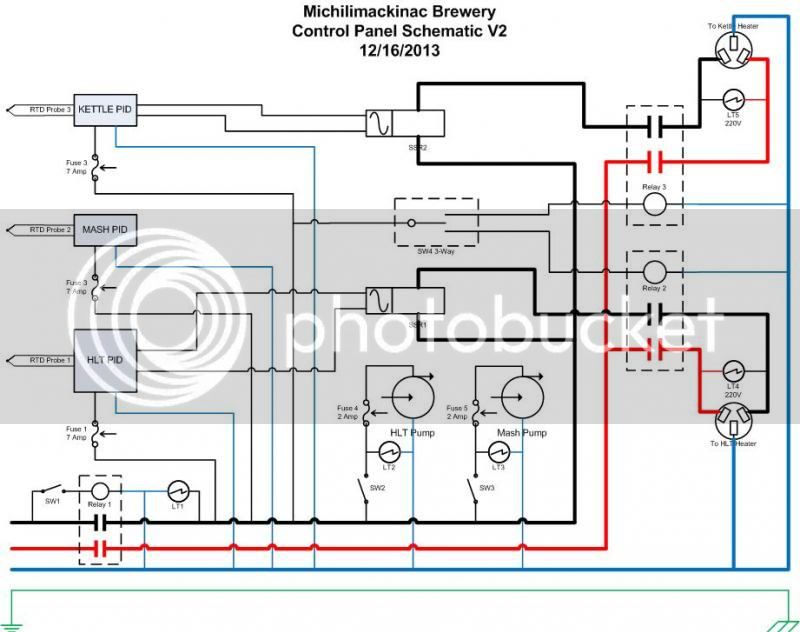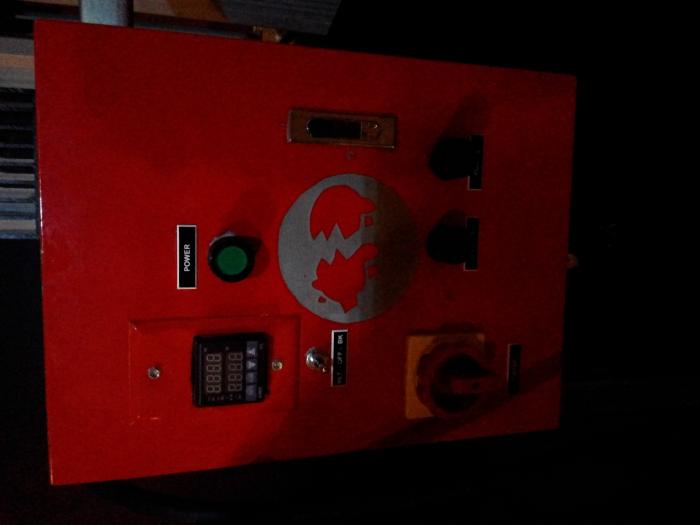iijakii
I guess that's part of the reason I asked...I don't know all that I want or don't want because I don't have anything to compare. Hoping to tap into the wisdom here on the sight and others who are a few steps ahead.
processhead
that's what I'm looking for...if the on/off switch does the same thing then it's a key to turn instead of a button that I hit...is that about right.
I like Kal's design and it was responsible for inspiring me to get my control panel done. The manual he wrote was really helpful and demystified the whole thing.
Here's what I would recommend, if you're wanting to get rid of some functions that don't get used all that much, and maybe adding some that really do get used a lot:
Key switch can be dumped. No real need for it. But I would recommend replacing it with a mushroom button to act as your main power switch.
The amp meter / volt meter can be dumped as well.
If you get rid of those two meters, then you can get rid of some internal parts:
* (2) adjustable DC power supplies
* (2) AC/DC transformers
* 50A shunt
That saves a lot of internal space.
The timer can be dumped. Who doesn't have access to a lot of different timers these days? My smart phone has a few different brewing apps on there and they all have timers that let me know when to add the next round of hops.
Yes, all of the alarm switches and the alarm itself can be dropped. I have an alarm system set up on mine, but I rarely use it.
The mash tun PID can be dumped, since its only function is to display the temp of the mash tun. I replaced the mash tun PID with a simple temp display unit. One third the price. Does the same thing. Or you can just dump the display altogether and you could use a stick thermometer to check your recirculating mash temp periodically.
One thing that Kal's box doesn't do that I added to mine is to have a temp display unit for the chiller. If you're going all electric, why depend on an analog dial for your chiller under your table?
The main control panel plug can be hard-wired into the box, so you won't need the extra set of plug / outlet. Those things are pricey.
Speaking of which...all of the probe wires can be hard-wired into the box as well, saving you time and money on the disconnects. Honestly, I have not used those disconnects since making my control panel.
Locking outlets and plugs for the pumps is way overkill. Unless you have some serious vibration problems on your wall, your pumps are not going to be accidentally unplugged just by using some standard plugs.
Kal made disconnects at the control panel for the heating elements but no quick disconnects near the pots. From a functional standpoint I think it should be reversed. Hard-wired into the box, and quick disconnects near the pots.
You can get rid of the top / bottom / front SS rounded handles as well. They're pretty pricey and they really don't do a whole lot other than make it look cool.
If you drop the volt and amp meter and the timer and the alarms, then you definitely could get away with a considerably smaller box, which could also save you some money.
Do NOT skimp on the heat sink(s) for the SSR's. You want to keep those things cool, so they last you a long time. Even so, they may wear out, so it may be a good idea to buy a backup in case one fails on you. Maybe buy an extra contactor as well.
I'd also recommend spending the money on the wiring to allow your system to run with both heating elements on at the same time. Not for doing back-to-back batches of beer, but for heating up your strike water in your BK while you also heat up your sparge water in your HLT. You heat up both, you dump your strike water into the MLT, and then BAM! Your sparge water is already at the right temps to keep your recirculating mash through the HERMS to where it needs to be.
I'd also recommend adding some SS float switches to the HLT and BK that are hooked into the wire between the PID and the SSR, so if the liquid levels on either vessel get too low then they'll stop the element from firing. It's a cheap insurance policy.
Good luck!





 just like gas vs electric of all grain vs extract.
just like gas vs electric of all grain vs extract.


